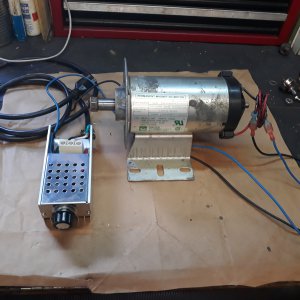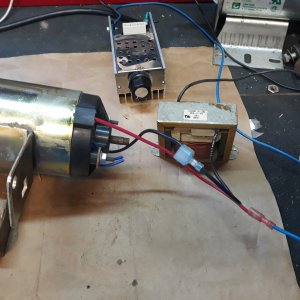You don't need to limit the motor RPM to 1800. You merely pick what you want to be the maximum spindle RPM (which strangely enough for the 101.07301 and 618 could be anything up to 3225) by using the largest step on the spindle cone pulley and picking the motor pulley diameter to give that with the motor at its maximum rated RPM.
What you need to do if your variable voltage AC supply doesn't already is to add a current limiter circuit to your system. One HP mechanical is 746 Watts electrical. And Watts equals Volts times Amperes. So 1/3 HP equals 249 Watts and if the DC motor is a nominal 180 VDC one, then 1/3 HP @ 180 VDC is 1.38 Amperes DC. Ideally, the current limit should vary inversely with the upstream voltage. So with the voltage set to nominal 1/2 speed which we will assume would be 80 VDC, the current limit should rise to 2.76 A. If it isn't a 180 VDC machine, the adjust all of the figures accordingly.
However, the motor controller is fast becoming quite complex.






